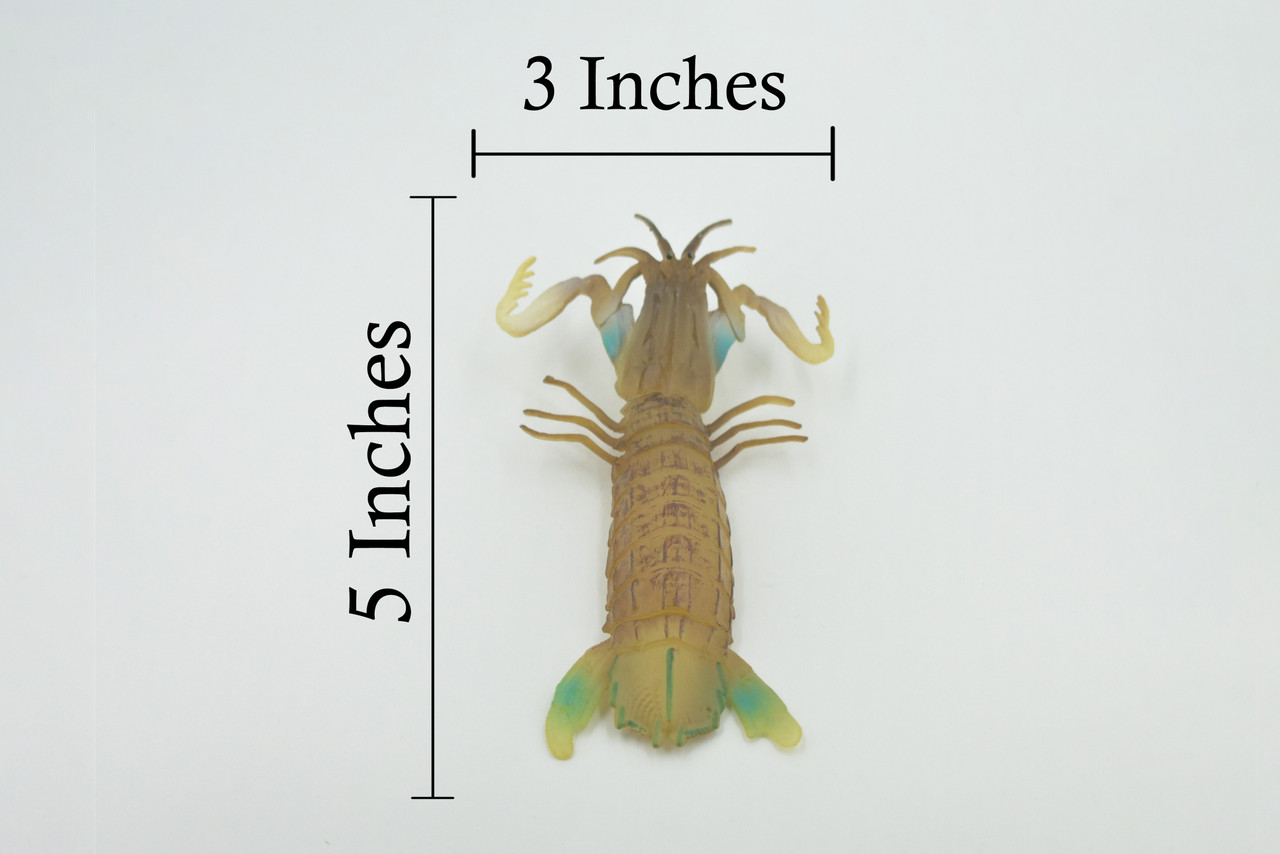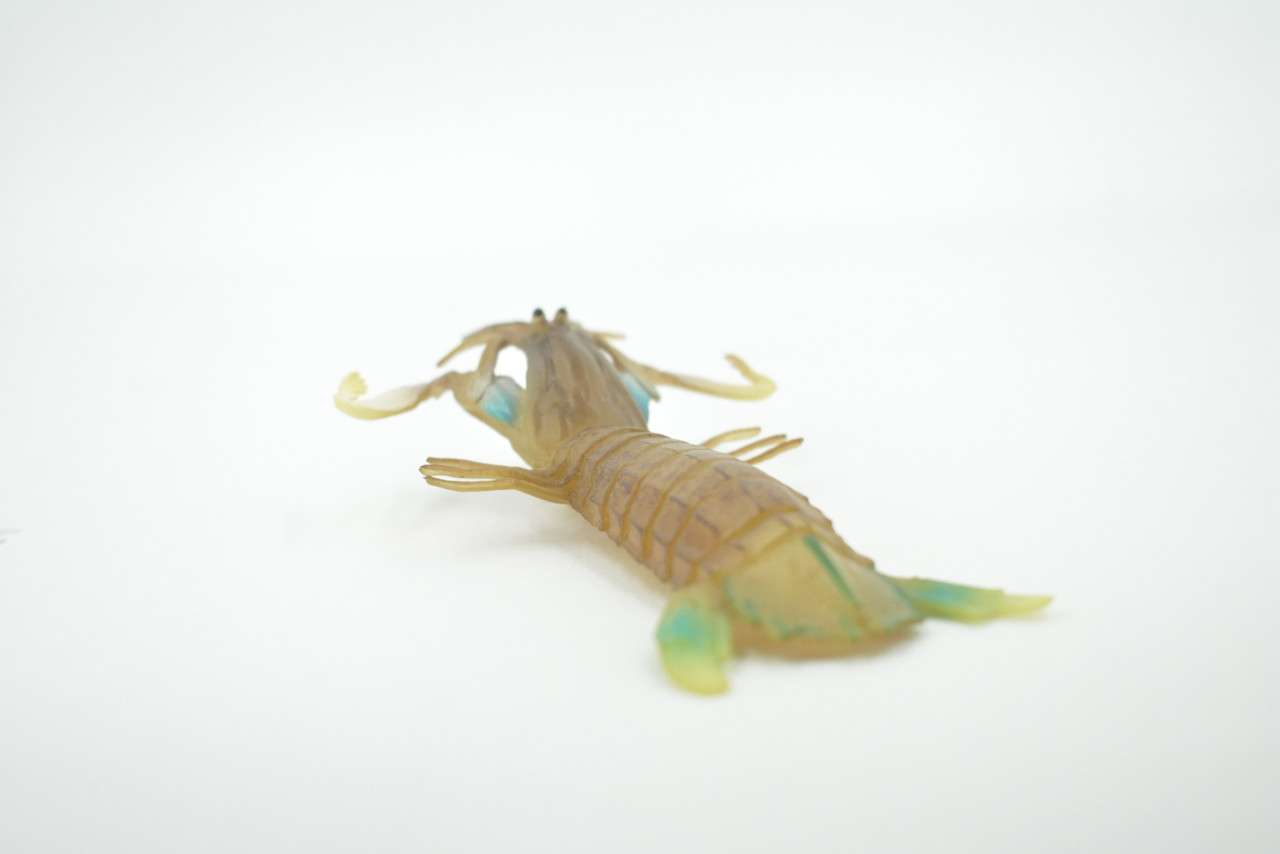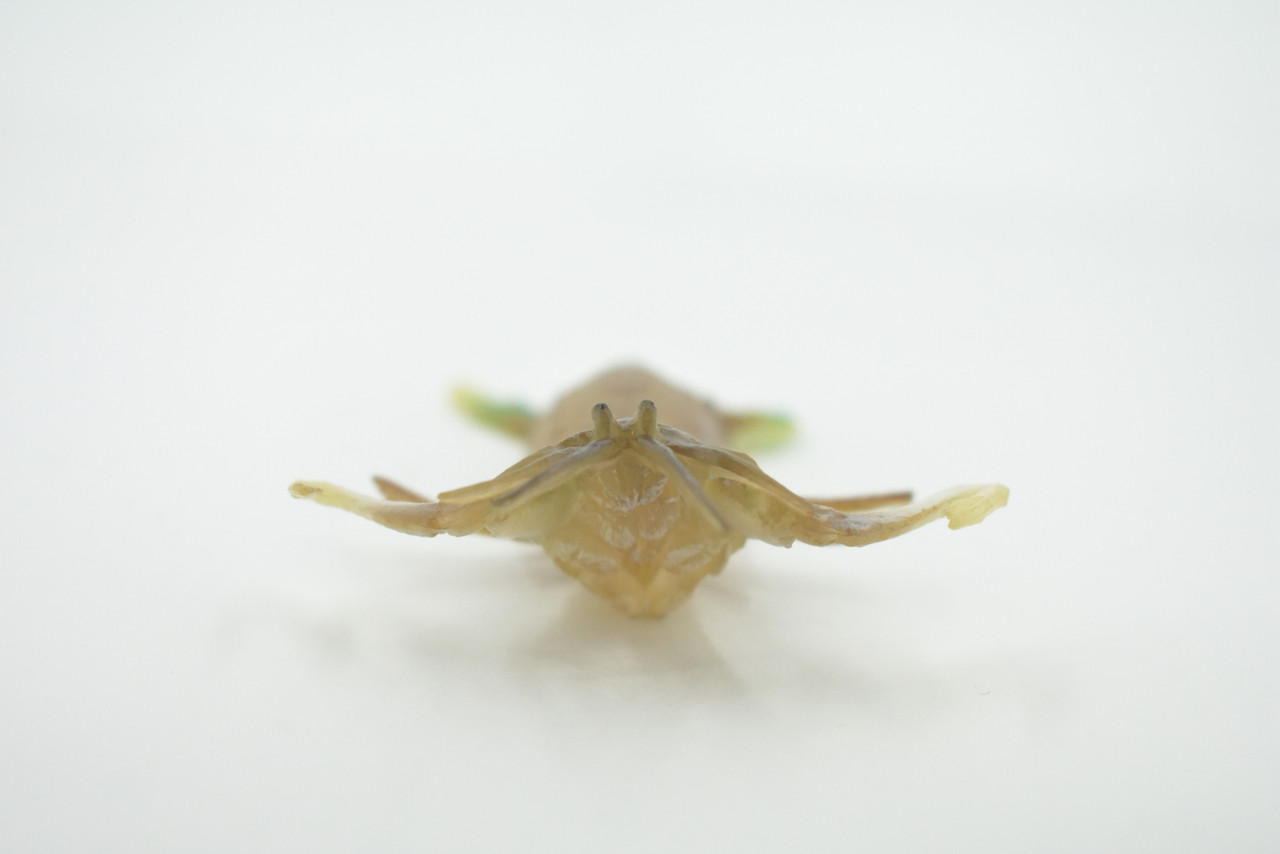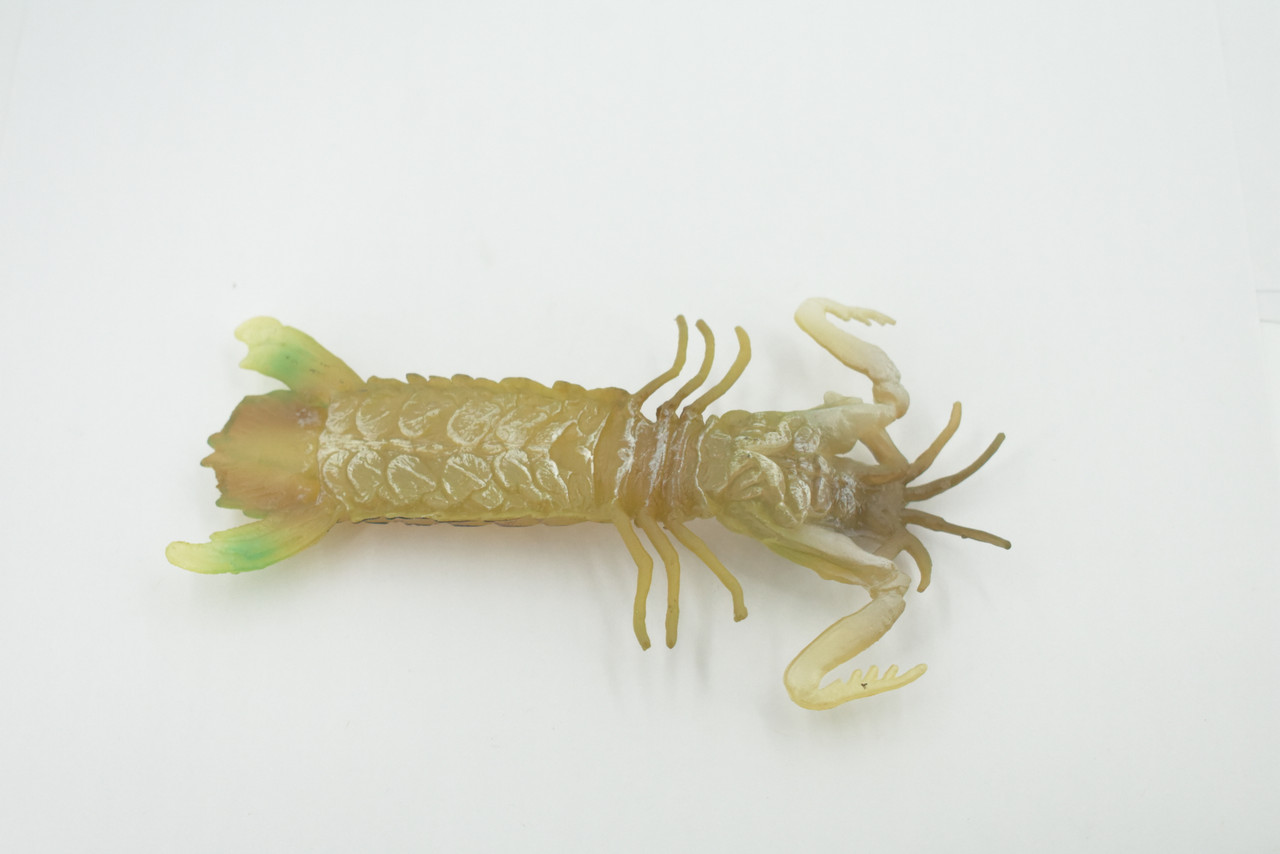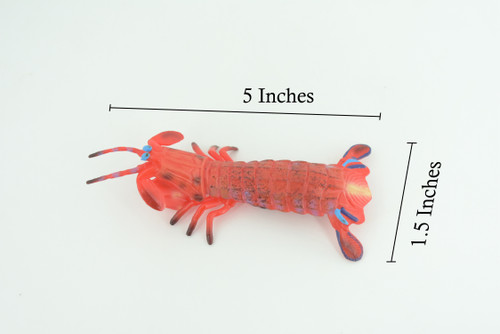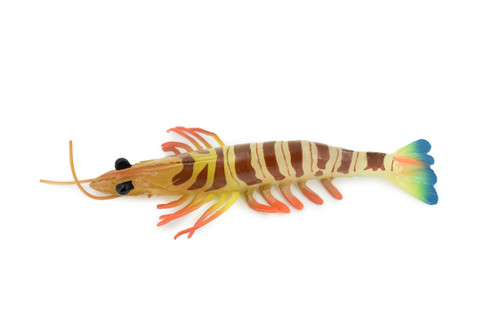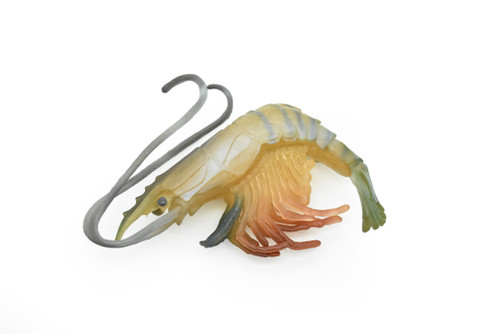Product Description
This Mantis shrimp figure includes hand painted features to give it realistic details that are true to natural anatomy. This figure is considered a museum quality replica. Highest Quality Natural Rubber.
Mantis shrimp are carnivorous marine crustaceans of the order Stomatopoda (from Ancient Greek στόμα (stóma) 'mouth', and ποδός (podós) 'foot'). Stomatopods branched off from other members of the class Malacostraca around 340 million years ago. Mantis shrimp typically grow to around 10 cm (3.9 in) in length, while a few can reach up to 38 cm (15 in). A mantis shrimp's carapace (the hard, thick shell that covers crustaceans and some other species) covers only the rear part of the head and the first four segments of the thorax. Varieties range in color from shades of brown to vivid colors, with more than 520 species of mantis shrimp known. They are among the most important predators in many shallow, tropical and subtropical marine habitats. However, despite being common, they are poorly understood, as many species spend most of their lives sheltering in burrows and holes.
Called "sea locusts" by ancient Assyrians, "prawn killers" in Australia, and now sometimes referred to as "thumb splitters"—because of the animal's ability to inflict painful wounds if handled incautiously—mantis shrimp have powerful raptorial appendages that are used to attack and kill prey either by spearing, stunning, or dismembering. Some mantis shrimp species have specialized calcified 'clubs' that can strike with great power, while others have sharp forelimbs used to seize the prey (hence the term "mantis".
The mantis shrimp's second pair of thoracic appendages has been highly adapted for powerful close-range combat. The appendage differences divide mantis shrimp into two main types: those that hunt by impaling their prey with spear-like structures and those that smash prey with a powerful blow from a heavily mineralized club-like appendage. A considerable amount of damage can be inflicted after impact with these robust, hammer-like claws. This club is further divided into three sub regions: the impact region, the periodic region, and the striated region. Mantis shrimp are commonly separated into many (most fall into spears and smashers but there are some outliers) distinct groups determined by the type of claws they possess:
Thanks for visiting Collectible Wildlife Gifts, the leading provider of high-quality, lifelike animal Designs and gifts! We work hard to ensure we have a diverse range of products. Each product is inspected for their quality craftsmanship. Whether you're searching for a great gift or seeking educational designs for displays, we’ve got you covered.
At Collectible Wildlife Gifts, our products appeal to a wide range of customers, including family, friends, and educators. Our products are trusted and used by professional organizations as well including aquariums, zoos, and movie studios.
Our extensive line of products boasts everything from plush sharks to educational animal growth cycles. Our products bring joy to recipients, and serve as valuable educational resources, sparking curiosity and fostering learning.
Discover the wonders of the natural world with Collectible Wildlife Gifts. Browse our collection today!



